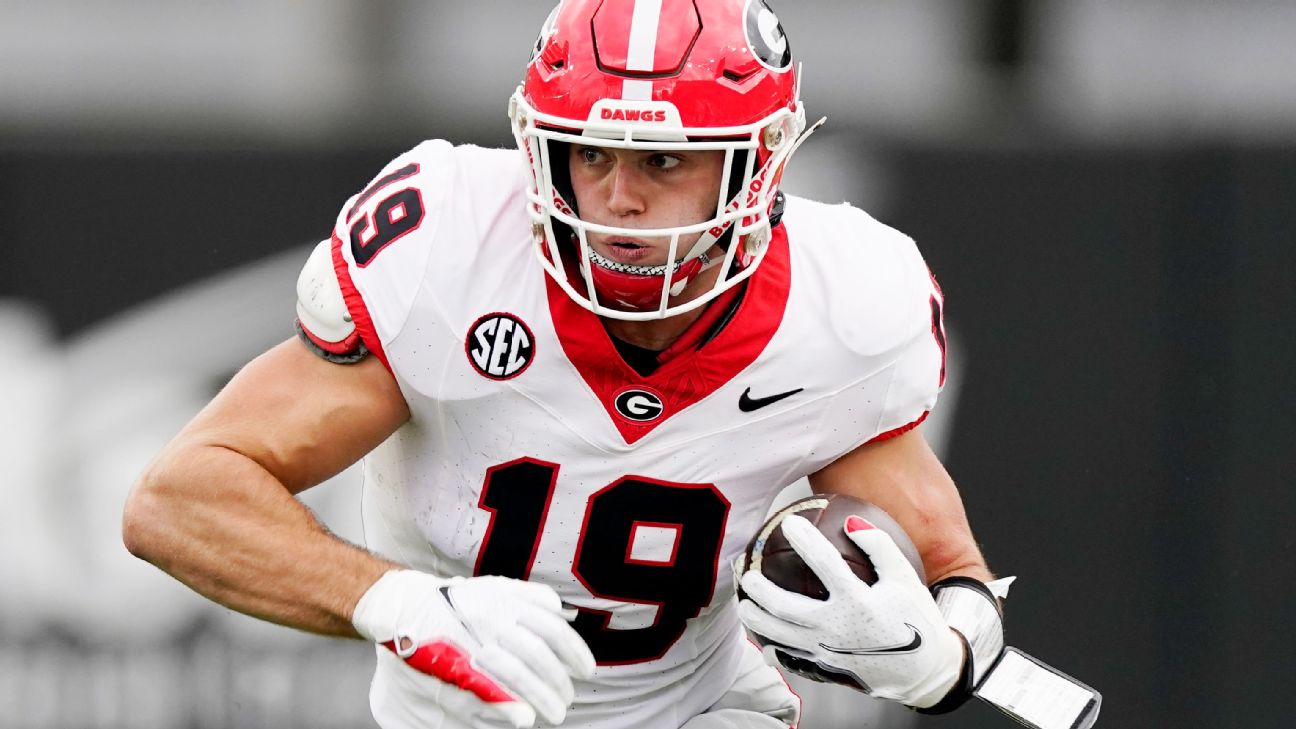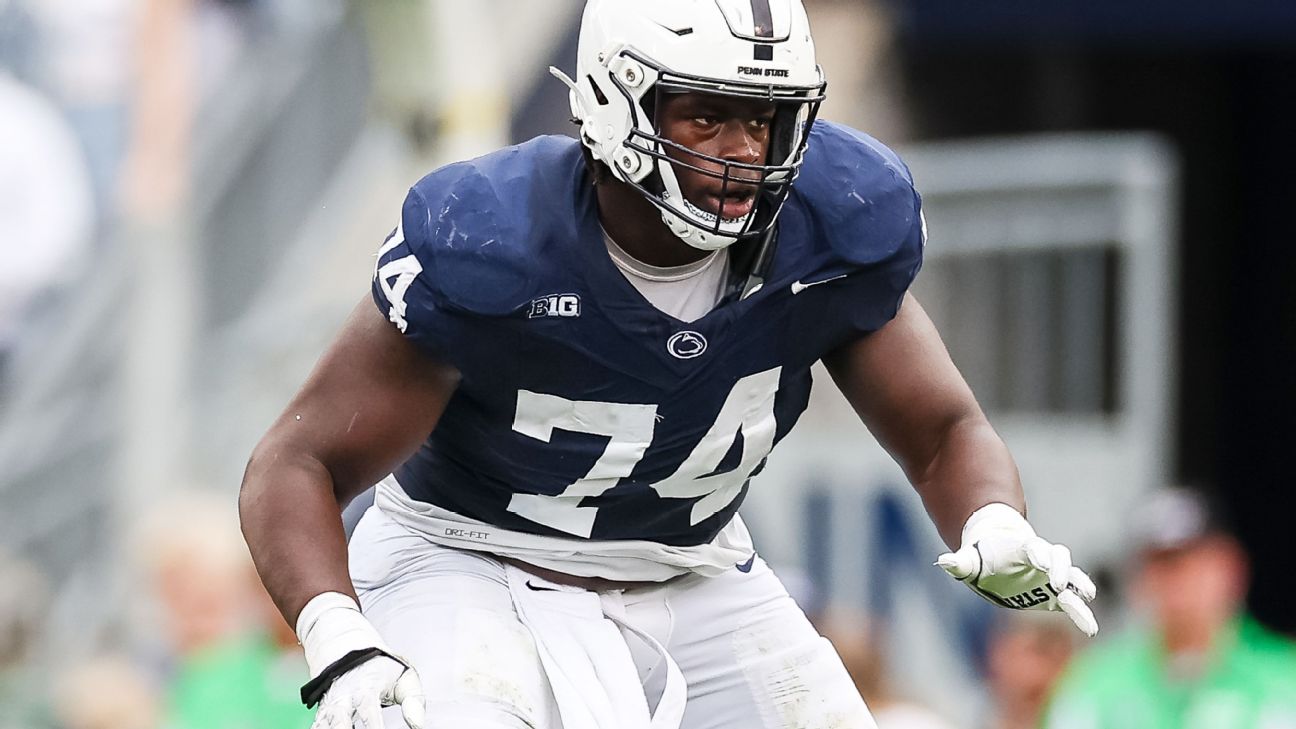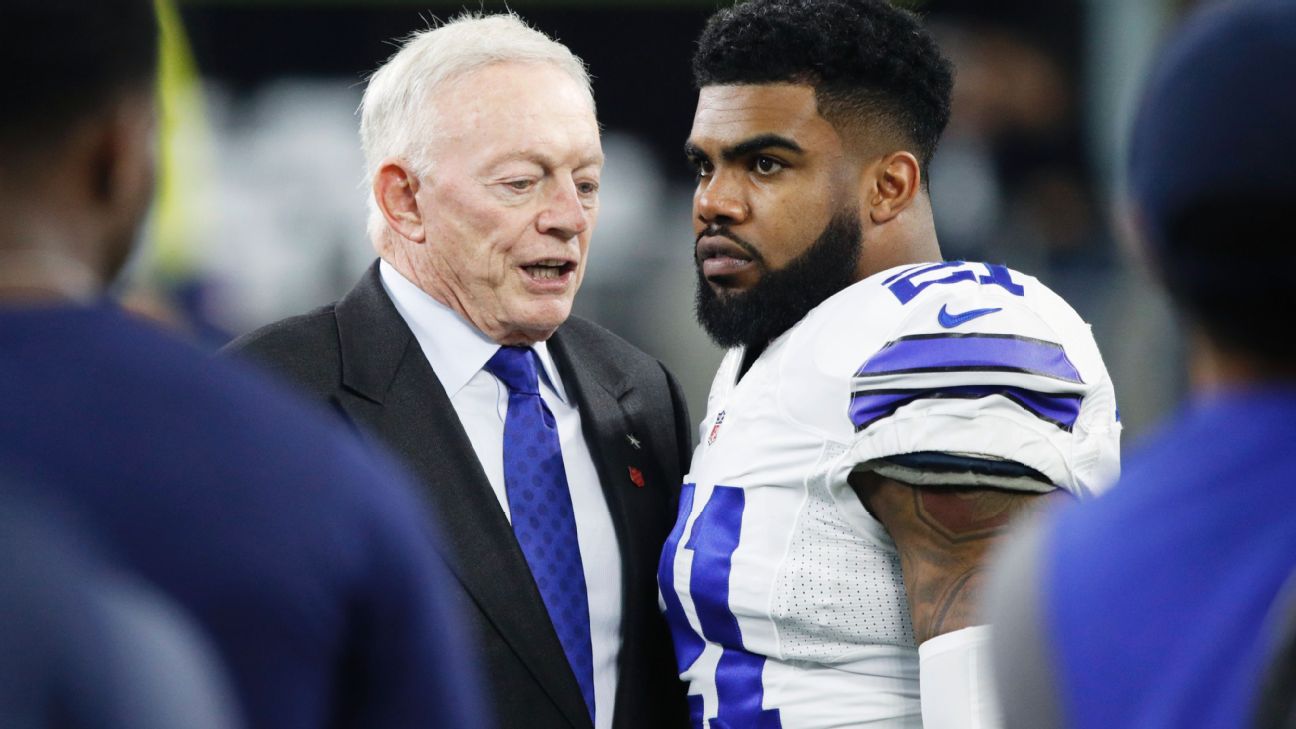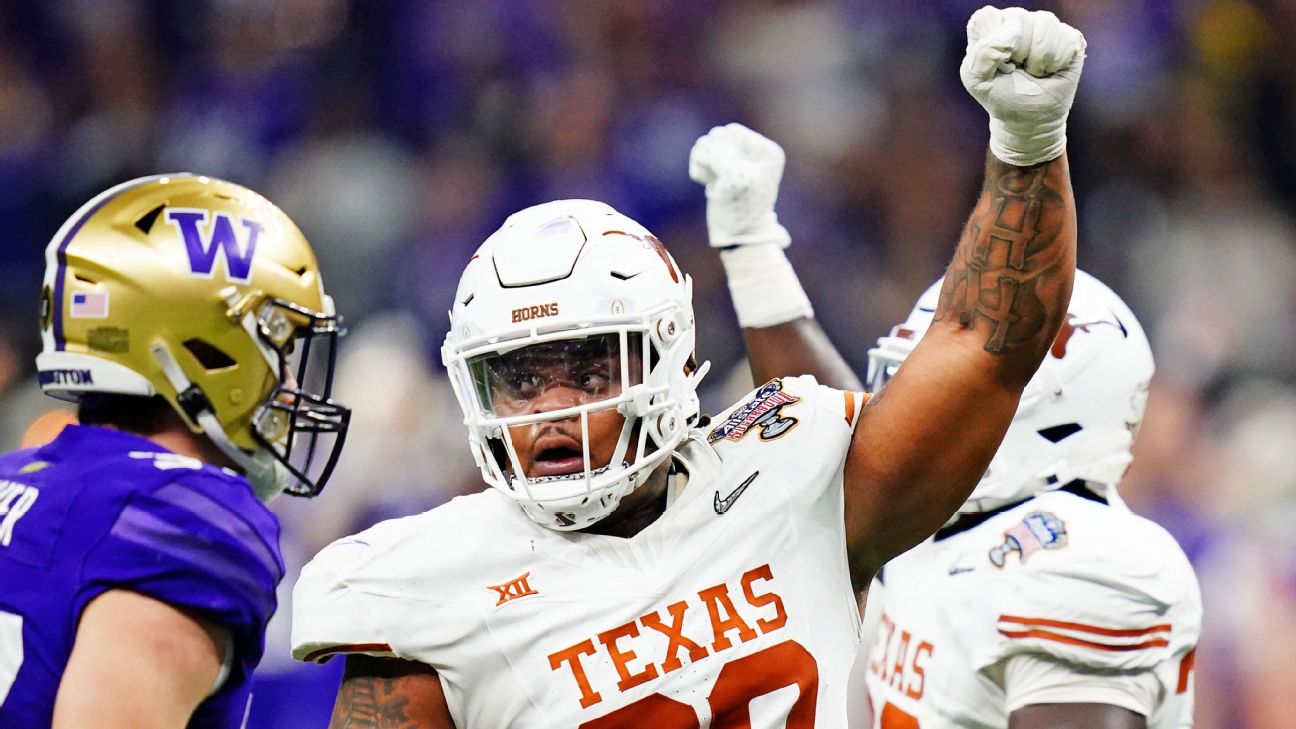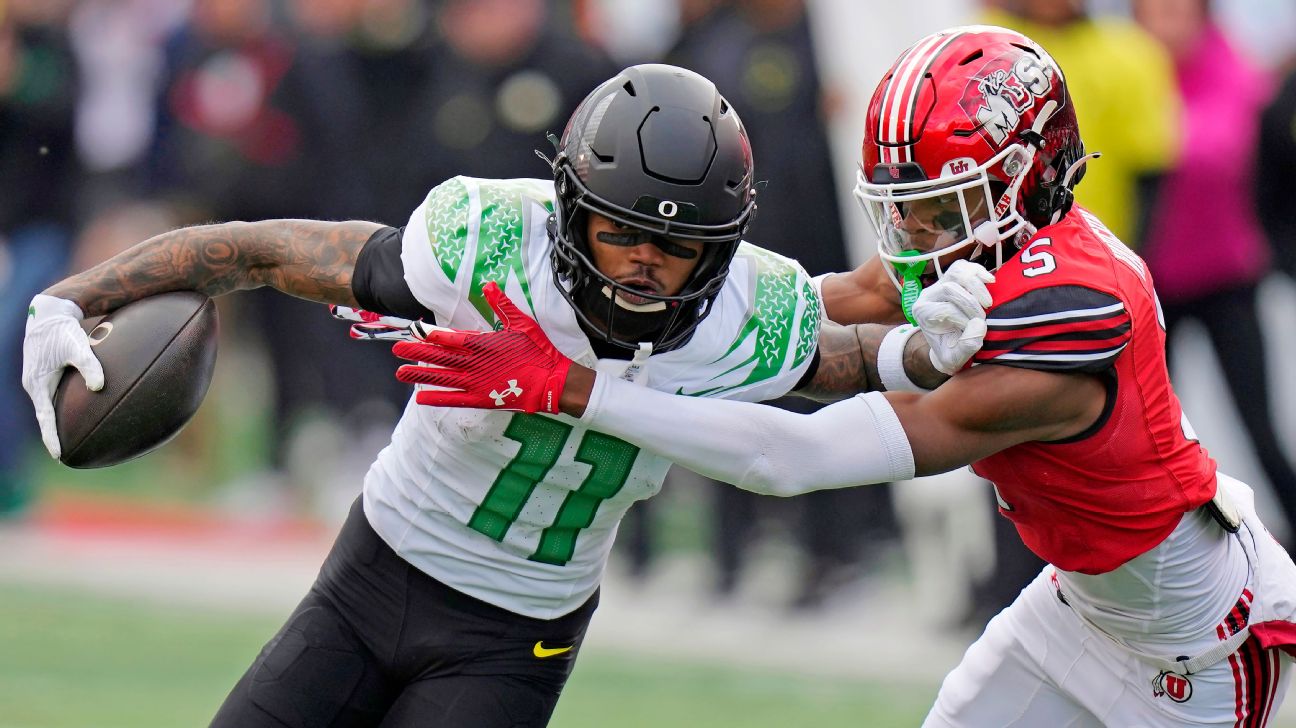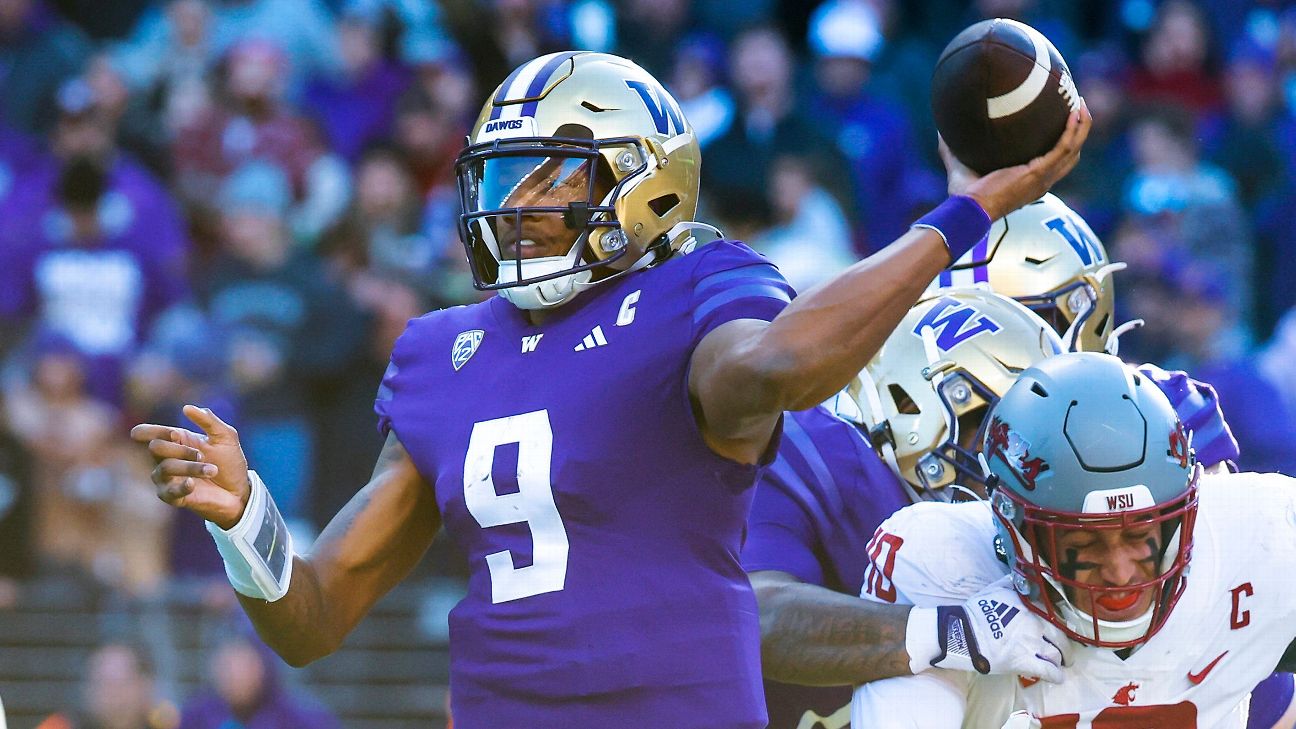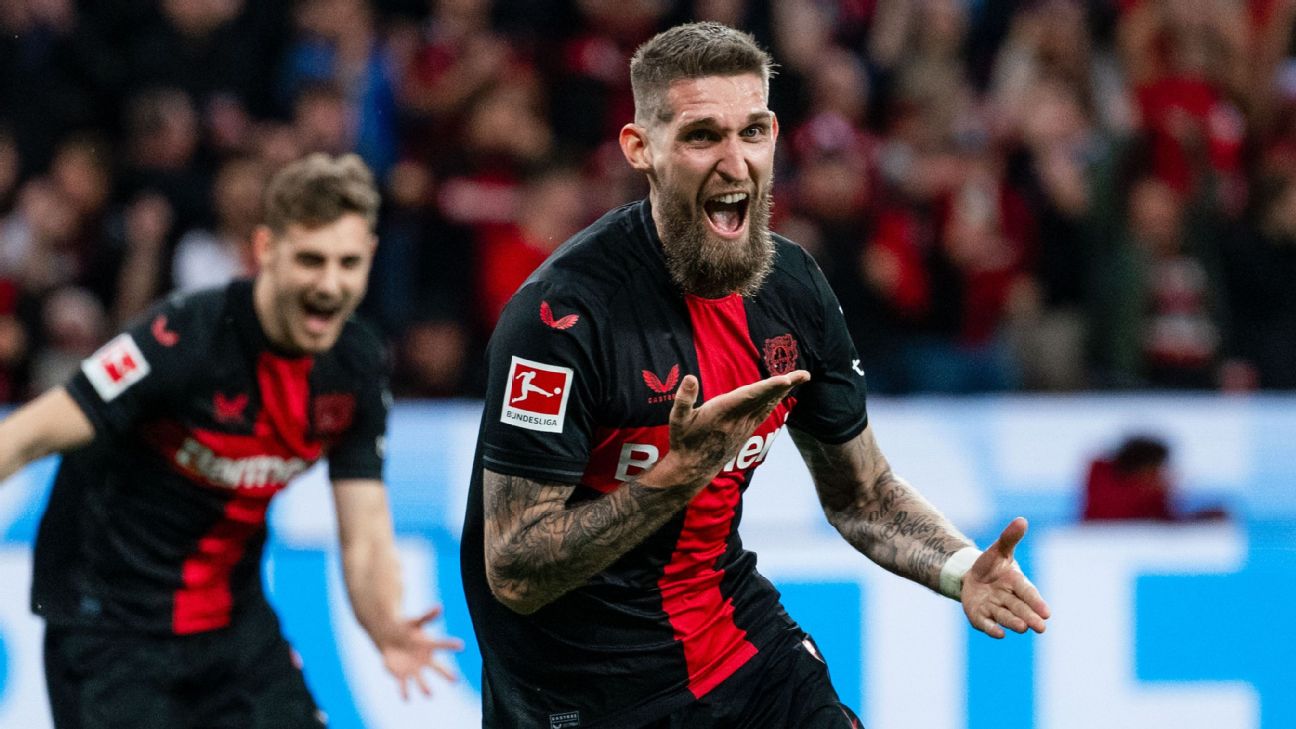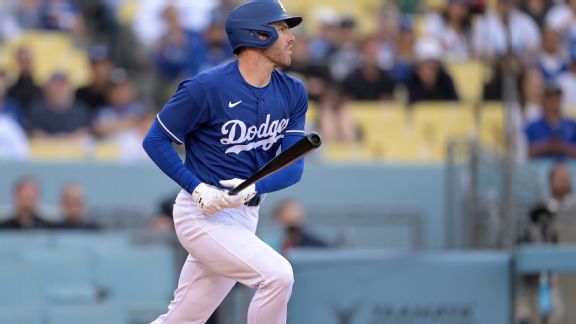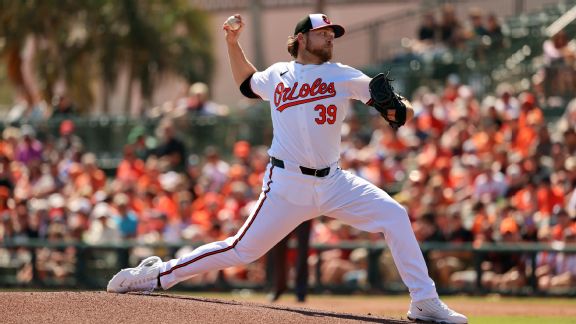![Cale Makar 1 [608x342] - Copy](https://a.espncdn.com/photo/2019/0321/r517208_2_608x342_16-9.jpg)
Mullin Never want to leave PL-dreaming Wrexham
BOSTON UNIVERSITY CENTER Macklin Celebrini's path to becoming the potential No. 1 pick in this year's NHL draft is one that's about taking advantage of an opportunity that he and others like him previously didn't know existed.
Rick Celebrini said his son's dream was playing major junior hockey, like that of many Canadian teenage boys. In Macklin's case, that meant playing in the Western Hockey League, as that's what he was exposed to growing up in Vancouver.
Then the Golden State Warriors hired Rick as their director of sports medicine and performance. The family moved to the Bay Area, which led to Macklin and his older brother, Aiden, playing for the San Jose Jr. Sharks. Playing one season in the United States presented a development option that nobody in Celebrini's family had known much about.
College hockey.
"The boys came down and played with the Jr. Sharks and decided they needed more," Celebrini said. "Now we are looking at other options in the States. They wind up at Shattuck[-St. Mary's], which is an amazing place for development. Then you broaden your perspective on the different pathways."
Going the collegiate route has led to Celebrini having one of the strongest seasons by a true freshman in NCAA history. The 17-year-old has scored 31 goals while averaging 1.69 points per game, the third-best rate in the country. Not bad considering he often is facing opponents who are at least 4 years older than him.
Celebrini has already won individual accolades such as the Hockey East Player of the Year and Rookie of the Year awards. Now, with BU a No. 1 seed in the Sioux Falls region of the NCAA tournament, he's trying to help the Terriers win their sixth national title and their first since 2009, when Celebrini was just 3.
Long touted as the best talent in his birth year, Celebrini is also the latest example of a growing trend over the last few years that has seen more elite Canadians play college hockey.
Every game of the NCAA men's hockey tournament, including the Frozen Four and championship game, is on the ESPN family of networks and will be available on ESPN+. Subscribe to watch!
From 1993 through 2015, 19 Canadians who played college hockey were selected in the first round of the NHL draft. It's a list that includes top-three picks Paul Kariya, Kyle Turris and Jonathan Toews, among others. The average draft position for those players was 18th.
Since 2016, there have already been 14 Canadians who played in college and were drafted in the first round. That list includes top-five picks Cale Makar, Owen Power, Kent Johnson and Adam Fantilli, with an average draft position of 12th. Celebrini will improve those figures as he is one of three Canadians who could go in the first round this year.
The long-standing practice has been players who could be ready for the NHL at 18 or 19 typically go the major junior route, while those who need more development time spend at least two years in college. So elite Canadian-born players, such as Celebrini, have traditionally chosen major junior as their development path.
Even so, there has been a decades-long debate about which path is better. While there are still elite Canadian players who take the major junior route, how has college hockey over the last few years attracted a caliber of player that might not have been an option in the past?
"I think when you go back into the 1980s, there was not a ton of knowledge," University of Denver assistant coach Tavis MacMillan said. "There was no internet. There was no social media. Television was completely different as far as coverage. The knowledge of college hockey was limited. I was fortunate because my uncle played college hockey and usually, that's how connections were made."
GROWING UP IN Mississauga meant Power was largely exposed to the Ontario Hockey League. There was an OHL team not far from his childhood home. The fact he was a touted youth player meant he'd seen OHL facilities and had an idea of what they were like.
He was first exposed to the college game when one of his minor teams traveled to the U.S. for a tournament in South Bend, Indiana. His team was given an unofficial tour of Notre Dame, and he noticed a difference between the Fighting Irish's facilities and what he saw in the OHL.
Seeing how much of a financial investment Notre Dame made versus that of the OHL teams made Power decide he wanted to play college hockey, ultimately playing for the University of Michigan. He was the No. 1 pick in the 2021 NHL draft by the Buffalo Sabres.
"I think a big thing before was a lot of parents in Toronto don't really see a lot of Canadian guys making it out of college," Power said. "A lot of them might have been hesitant to send their kids there. But once you saw more guys who grew up in Canada, went to college and were playing in the NHL, that's when they started to realize, 'OK, this is good development.'"
Power's story about his first exposure to college hockey is an example of how much the college game has grown in visibility. That wasn't the case for players such as MacMillan and Arizona Coyotes director of amateur scouting Darryl Plandowski, Canadians who played collegiately more than 30 years ago.
MacMillan had an uncle who could answer his questions about college hockey, while Plandowski learned about it through reading different publications. Growing up in Western Canada meant they were exposed to the Western Hockey League. The Junior "A" leagues, such as the Alberta Junior Hockey League and Saskatchewan Junior Hockey League, were front and center.
But those leagues were known for being a feeder system to the WHL at that time instead of being a proving ground for the college game, as they're widely recognized today.
The AJHL and SJHL had nine teams when MacMillan and Plandowski played. This season, the AJHL started with 16 teams before five announced they would be joining the British Columbia Hockey League, while the SJHL had 12 teams. The WHL also expanded from 14 teams in the late 1980's to 22 this season, with six based in the U.S.
"There were not many teams. It was tough sledding to be good enough back then," Plandowski said.
Plandowski's Elite Prospects page shows he scored 42 goals as a 17-year-old while having consecutive 50-goal seasons at 18 and 19. He wasn't recruited by any colleges until his age-19 season, and even then, he had to explain to his parents what college hockey was and how it worked.
He said colleges back then would send booklets about their school as an entry point to recruit players. But Plandowski, who played four seasons at Northern Michigan University, had questions about whether he was good enough to play elsewhere because he was unsure how he compared to others beyond the SJHL.
Even as more NCAA schools began recruiting Canadians, the majority of those elite players still went the major junior route. In the 1980s, there were eight Canadians in college hockey who were first-round NHL draft picks.
By comparison, there have been six Canadians who have played or are playing college hockey that have become first-round picks since 2021.
MacMillan, who played at the University of Alaska, said there started to be a wider spectrum of people who knew about college hockey by the time he started coaching in 1996.
"You talked to some who had little knowledge of U.S. school and college hockey," MacMillan said. "Then you had some guys who knew a lot. They may have been guys who were second generation who had parents that played. Maybe the kids in Ontario had more knowledge or the kids in Western Canada if they lived in cities that were closer to the U.S. Now what you are seeing is parents with much more knowledge. It's night and day."
GARY MAKAR FIRST heard about college hockey as a possible development path in 1991 when he met Calgary Flames CEO and Hockey Hall of Fame inductee Bill Hay, who played for Colorado College.
Several years passed before Makar's nephew, Mark Logan, was being recruited to play college hockey. Watching his nephew play in the AJHL allowed Makar to understand how those leagues were a gateway to college, and possibly the NHL.
That made Makar want to learn more about college hockey because he felt it could benefit his two sons.
He was right. His older son, Colorado Avalanche star defenseman Cale, played at the University of Massachusetts, where he won the Hobey Baker Award as the nation's best player in 2019. His younger son, Taylor, is a junior forward at UMass who was a seventh-round pick of the Avs in 2021.
"When Cale was young, there was no College Hockey Inc. to go to for a seminar," Gary Makar said. "I did my digging and when Taylor was 14 or so, we went to a seminar. ... [Going to the seminar] was phenomenal and the one parents go to now is even better. They don't slam the CHL route, they don't say anything bad. It's information to say it is another option."
College Hockey Inc. was created in 2009 to help with the eligibility challenges that came with playing men's Division I hockey. Since then, the group's mission has been to help provide education while growing the men's and women's collegiate game.
Mike Snee, the executive director of College Hockey Inc., explained there are still barriers and perceptions to overcome. Snee said American families are going to be more familiar with the NCAA than many Canadian families because of the impact college sports have in America along with the academic eligibility requirements.
That's why College Hockey Inc. provides seminars in Canada. It gives representatives a chance to speak with players who are in their mid-teens and their families. That, in turn, allows those players and families to ask questions about navigating the college path.
"We want to make sure they understand the value of what they are doing and that they are doing what they need to do academically," Snee said. "So if they watch that Beanpot game and say that's what they want to do, there aren't any regrets."
Snee said College Hockey Inc. has hosted in-person and online events in Calgary, Edmonton, Montreal, Ottawa, Toronto, Vancouver and Winnipeg.
They've also had numerous Canadians with ties to college hockey who have spoken to different groups. Those speakers include former NHL defenseman Brian Benning, whose two sons, Matt and Mike, played in the NCAA. They've also relied on Turris, who played at Wisconsin, along with Gary Makar.
MacMillan said Snee and the work done by College Hockey Inc. have "given people another arm of information" that has helped grow the college game.
Snee explained how the visibility of college hockey and the American development model as a whole has been served through other ways. He said TSN showing men's and women's games such as the Beanpot and the Frozen Four has provided significant exposure.
He also noted how many of the NHL's Canadian teams have had influential players over the last few seasons who have shown college hockey is a viable path.
Former Boston College stars Johnny Gaudreau and Noah Hanifin played for the Flames. The Edmonton Oilers have Zach Hyman, who went to Michigan. Hyman's former team, the Toronto Maple Leafs, have two rookies who played in college in Matthew Knies (Minnesota) and Joseph Woll (BC), while the Montreal Canadiens have Cole Caufield (Wisconsin) and Mike Matheson (BC).
And among the Ottawa Senators, Vancouver Canucks and Winnipeg Jets, there are Brock Boeser (North Dakota), Kyle Connor (Michigan), Thatcher Demko (BC), Conor Hellebuyck (UMass-Lowell), Quinn Hughes (Michigan), Shane Pinto and Jake Sanderson (both North Dakota) along with Brady Tkachuk (BU) among others.
"When we go into these Canadian markets, they do want to help us," Snee said. "They want to introduce us to people and spread the word. They're almost all 35-to-55-year-olds who played college hockey. ... They look back years later and they loved their college hockey experience more than some of their American teammates."
SCORING 50 GOALS and 117 points for Shattuck-St. Mary's U-18 team as a 15-year-old meant Macklin Celebrini was going to have options.
That's when Rick Celebrini and their family started looking into the different paths that were open for Macklin. Should he go to the WHL? Or would it make more sense for him to play in the USHL for a year and then go to college, given he was being recruited by 20 or so schools?
"I don't know if there is a 'best way,'" Rick said. "I talked to Jim Hughes and Pat Brisson. The way they presented it made a lot of sense."
Brisson is an agent at CAA who represents stars such as Sidney Crosby, Nathan MacKinnon and Patrick Kane. Hughes is CAA's director of player development.
Hughes and Brisson, who have been advising the Celebrinis, laid out what both options have to offer. Rick Celebrini said their family was impressed by the Seattle Thunderbirds, the team that drafted Macklin with the first pick of the U.S. amateur draft in 2021.
But the college route worked better for their family for several reasons. Going to college created an opportunity for Aiden and Macklin to be teammates. With Macklin being 17, playing against older competition would be better for his development. They also felt the collegiate schedule of practices and workouts during the week and games on the weekends would allow both Aiden and Macklin to get stronger.
The Celebrinis also valued their sons getting a college education.
Celebrini said having Brisson and Hughes go through this experience as both parents and advisors helped their family. Brisson's son, Brendan, was a first-round pick who played at Michigan before joining the Vegas Golden Knights. All three of his Hughes' sons were first-rounders, with two of them -- Luke and Quinn -- going to Michigan.
Like the Celebrinis, the Hughes family had to decide whether to leave Canada as part of the boys' development. Although they are Americans, the family lived in Toronto for several years when Jim was an assistant coach with the Toronto Marlies before he became the director of player development for the Maple Leafs.
"We lived in Toronto for almost 11 years. My boys pretty much grew up in Toronto," Hughes said. "I could see the pressures of Canadian families with major junior, the OHL in particular. These Canadian kids have a very hard decision to make. If they chose the U.S. route, in particular the Chicago Steel [in the USHL], they go against the grain. It's a very difficult decision. Major junior is a great product."
Hughes said there was pressure when it came time for Jack and Quinn to leave Toronto to play for the U.S. National Team Development Program.
Drawing from that experience played an instrumental role in advising other families. Brisson and Hughes worked with Power and his family as they decided between the OHL and going to Michigan. They were also advisors for Johnson as he and his family were deliberating between the WHL and Michigan.
Power said getting a chance to speak with Quinn Hughes about his decision helped make him feel comfortable with his choice to go to Ann Arbor.
"I'm not saying one decision is better than the other, but we do believe in the path that he took," Hughes said of Celebrini. "He has a lot of flexibility. He can go back to school if he wants or if it is the right team picking him at the draft, maybe they can sign him immediately at the draft."
Rick Celebrini said his sons ended up at BU because the environment reminded them a lot of Shattuck-St. Mary's. With the Warriors playing the Boston Celtics during the 2022 NBA Finals, Rick was able to meet with BU coach Jay Pandolfo and his staff.
Aiden was already committed to BU, but talking to Pandolfo and his staff made Rick feel even stronger about the possibility of Macklin joining his brother.
Later that summer, Pandolfo and his assistants flew to the Celebrinis' home in California to spend the day with the family.
"The irony was we always wanted the boys to go to the same school and Macklin wanted to think about his own path," Rick said. "As much as they are close, he actually considered some different options. They were two independent processes. We gave them our thoughts on it as parents. Whether they chose different programs and had gone to different schools, we would have supported their decision."


